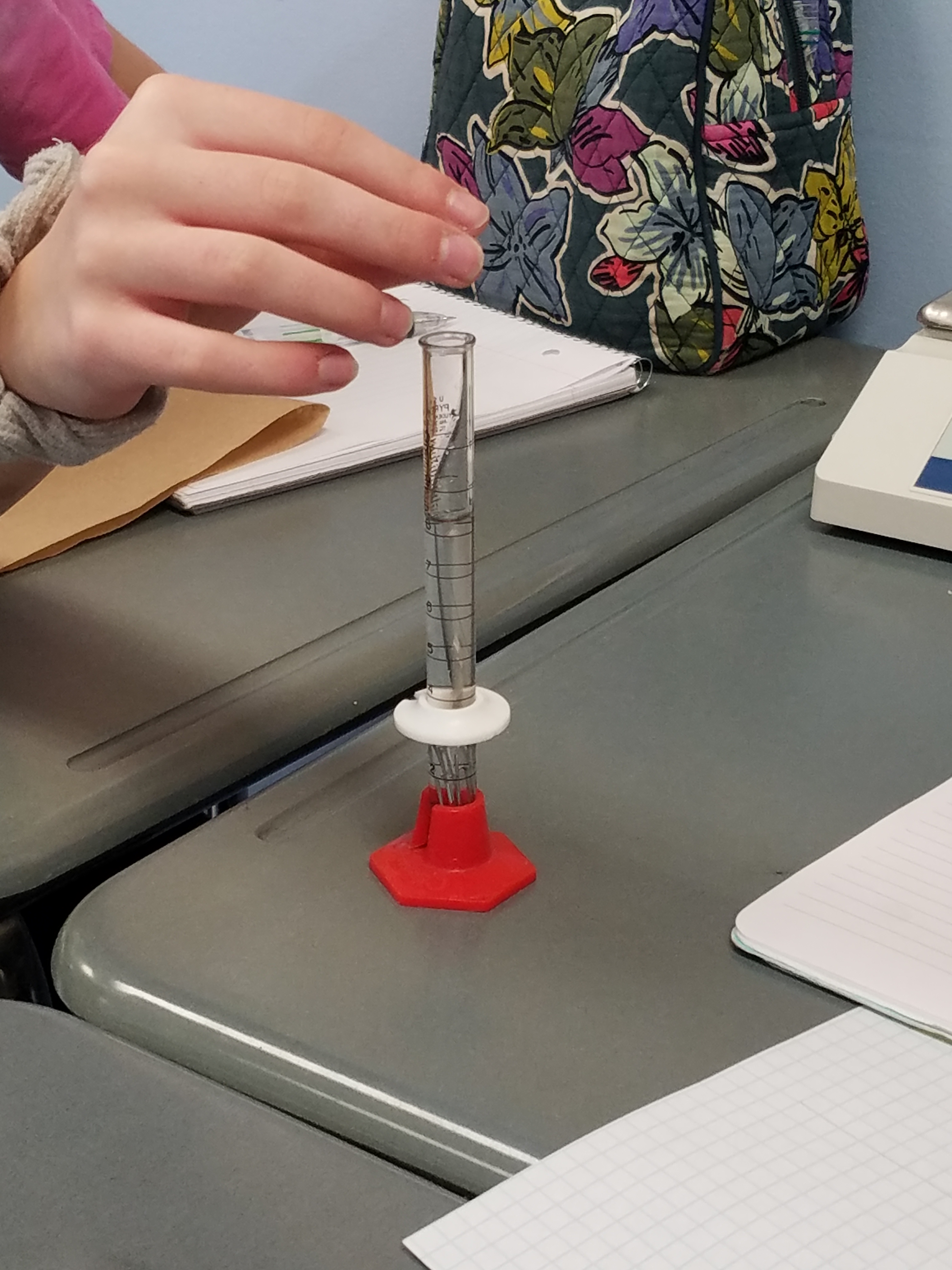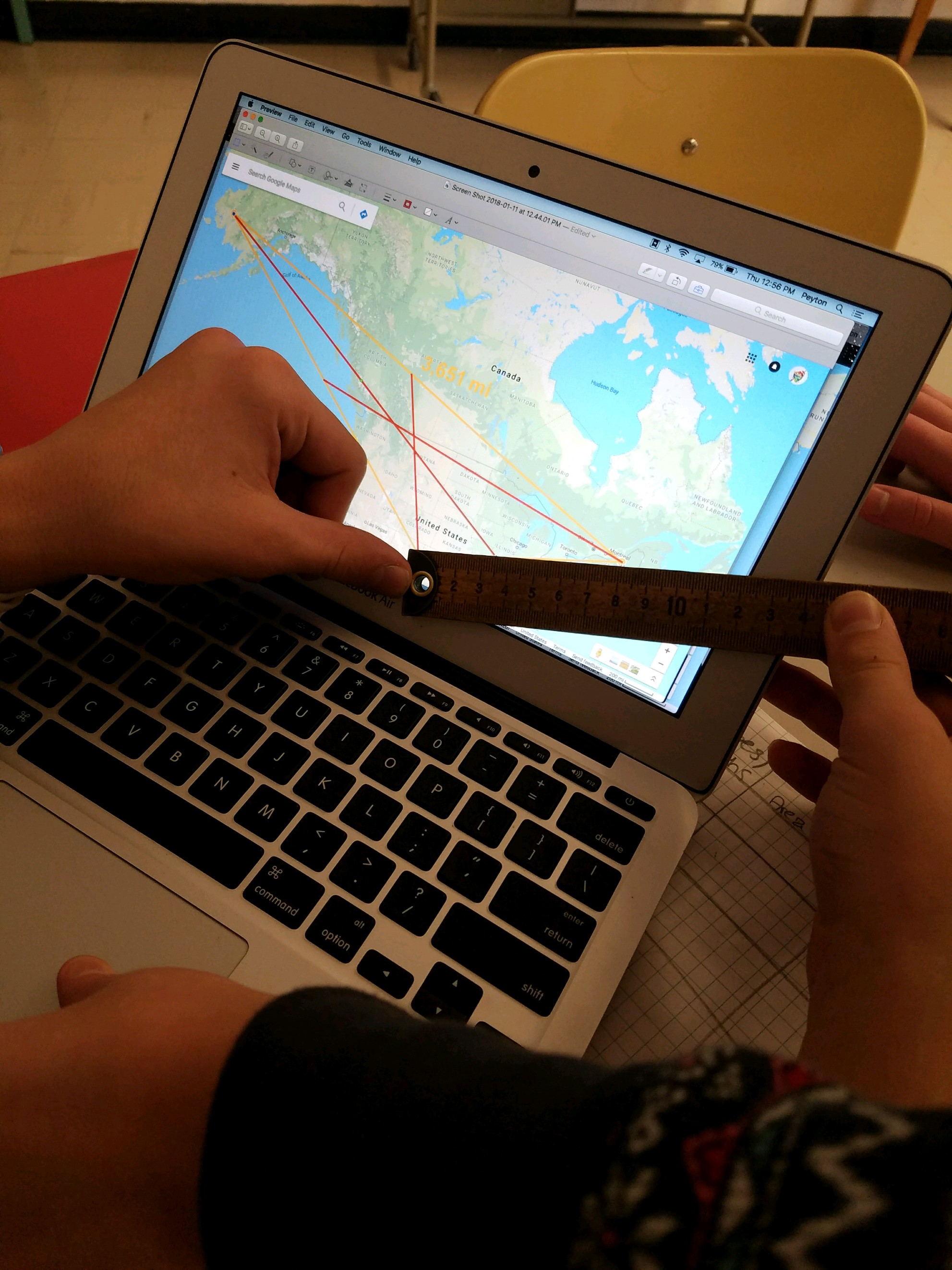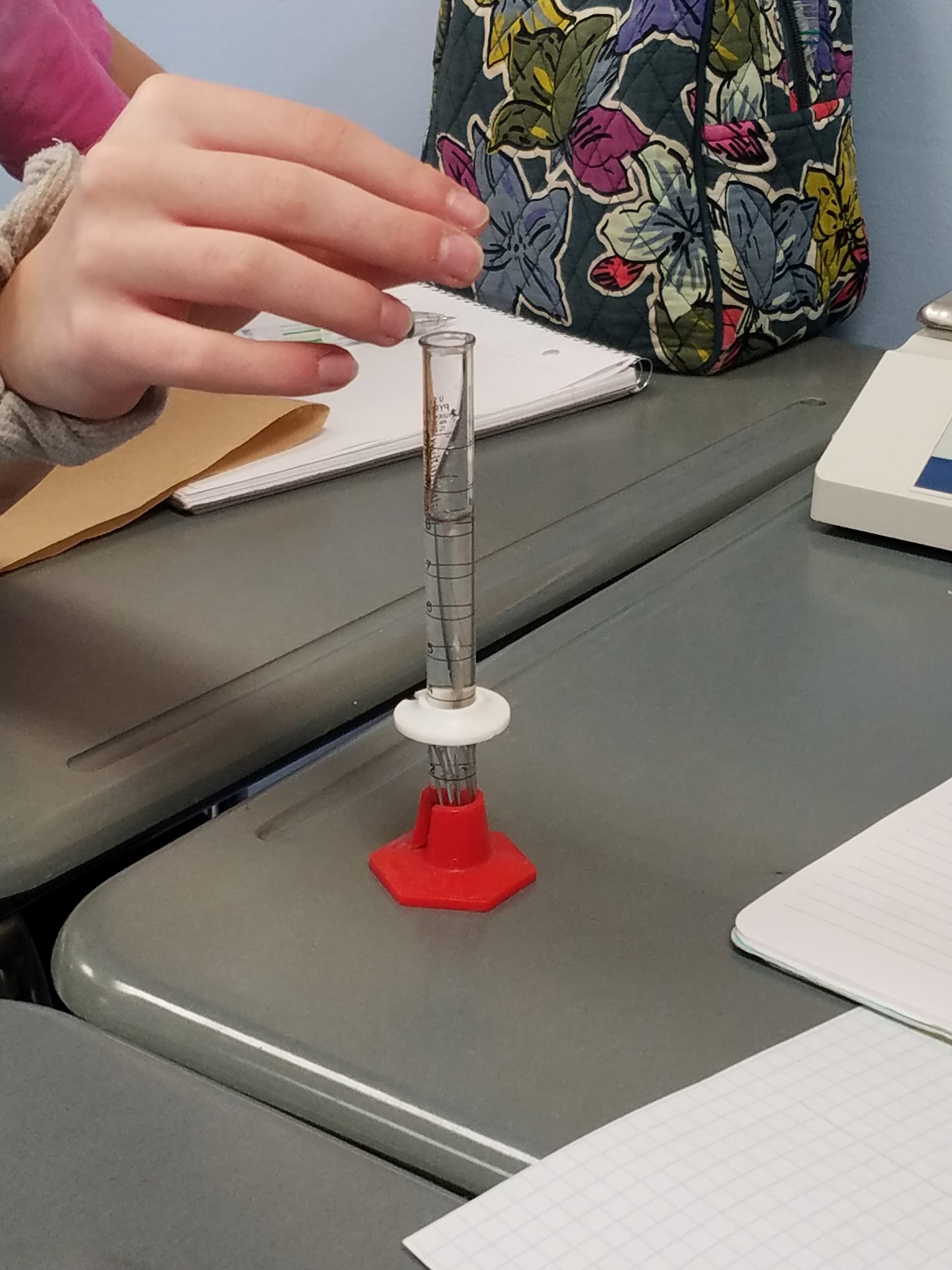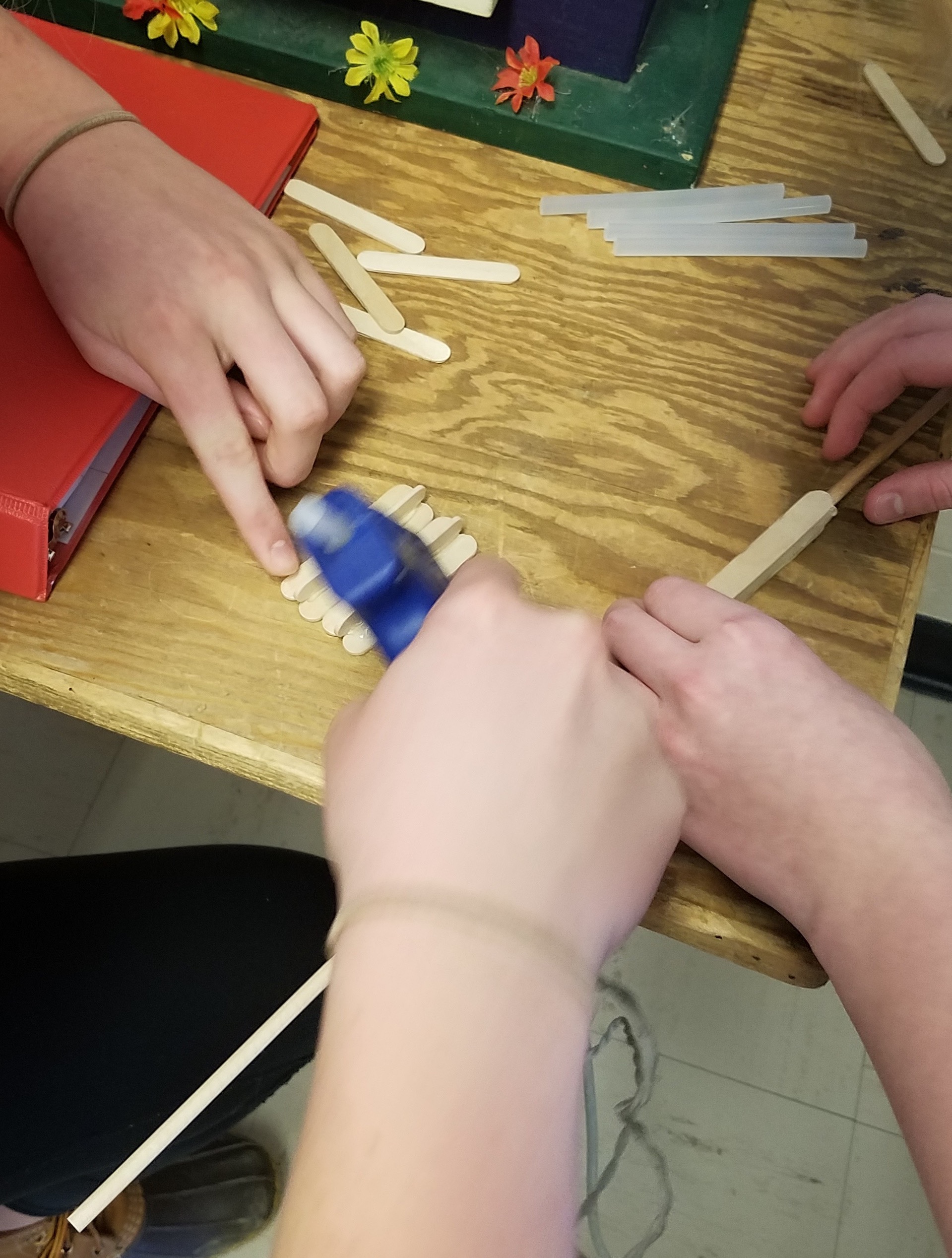6 quick ways to implement project based learning activities.
In my last couple posts I talked about why project based learning activities are worthwhile, and about 4 different types of project based learning activities. If this is not something that comes naturally to a person, it can be understandably confusing. There are still a lot of questions, such as, “How do I know what real-world scenario to use?”, “How do I put together an activity?”, “How will I have time to make my own materials?” Because of this, I’d like to discuss 6 quick ways to implement project based learning in the classroom.

Have students collect their own data and analyze it.

Having students collect their own data can be as quick as looking up stats that are interesting to them (such as baseball scores for a team), you can orchestrate an activity that produces the type of data you want them to use, such as weighing popsicle sticks to produce linear data (I just did this this week with my algebra 1 kids who are learning about scatter plots and arithmetic sequences!), and it can be as involved as a full fledged research project where the students design a study or survey, conduct the research, and analyze their results. Either way, having students collect their own data adds a huge element of ownership to the task for them, and makes it that much more engaging. If they are obtaining the data themselves, it naturally leads to questions about what it means, which produces a natural eagerness to finish the task. As indicated above, this method of project based learning can be used as an Extended Project, a Learning Lab, or an Application Task. (For a description of these tasks see my previous post here.)
Take a problem from a book and expand it.
This is probably one of the easiest methods of producing a project based learning task. Many textbooks have some great problems posed in them, but students find them daunting and inaccessible because they’re not sure how to approach the word problem. Rather than trying to come up with your own application problem, take one of these and expand it. Turn it into a step by step problem. Ask them to identify key pieces they will need to help them understand the question and what they are looking for, and provide information they need to solve it. Not only is this a quick and effective way to get students to focus on a practical application of what they are learning, it also has the added benefit of adding to their literacy skills by teaching them how to read and make sense of a word problem. This method can be used as a longer Prompt, a focused Learning Lab, or a classroom Application Task.
Pose a real-world problem to solve

Pay attention to the times you use the content you are teaching in your everyday life, and pose one of those problems to the students. For instance, I recently bought a dog run for our new puppy. I want the run to span the length of the back yard from the corner of the house by the back door, to the opposite corner of the yard. If I want to find out how long of a run i need, I could pose this problem to my students as either finding the hypotenuse of a triangle (to geometry, algebra, or trig students), or I could provide more structure and ask students to find the length by measurement, estimation, similarity, etc.(for younger grade students). In the case of the dog run, I would probably use that as an Application Task, or a Learning Lab, and complete it in one or two class periods, but posing real life problems like this can also be used for larger projects such as a Prompt, or an Extended Project, and it makes the students feel like they are solving a worthwhile problem. It’s not just a hypothetical situation they may or may not ever encounter, it’s a scenario that’s actually happening and that needs an actual solution.
Observe a demonstration and discuss it.
This is similar to watching a demonstration in science class, or on an infomercial. It could be a quick youtube video, which can be a great choice because it often brings what is happening currently in society into the content. I did this once with a video about the red paper clip. Some of you might be familiar with this, but I was teaching students about the value of investments, particularly collectibles, and that story was a great demonstration of how the value of collectibles varies dramatically. It could also be a demonstration of a certain phenomena you want the kids to explore, such as using basketballs to demonstrate parabolic behavior, or using colored water to demonstrate exponential decay. These kind of activities are quick and easy to plan, and can either be used as a lead in for a much larger task (like a Prompt) or you can have the students discuss the results or answer questions about it as an immediate interaction, such as with a Learning Lab or Application Task.
Have students come up with an analogy.
Do not underestimate the power of analogy! I love using analogies to tie what the students are learning to things they already know and understand in their everyday lives! It not only helps them understand the new material, but it can easily be used as a Prompt or Application Task to ask the students what the similarities are between the content and the analogy, and what the differences are. Being able to say how something is, and is NOT, like something else, provides a deeper understanding of the content. One of the ways I do this in class, doesn’t even look like a formal activity. When students are learning some of the vocabulary associated with a new topic, I will have them draw a T-chart with the word on one side, and synonyms on the other. So for instance, “Absolute Value”. What are synonyms for absolute? What does that word mean? What about for value? Students usually say absolute means total, complete, all, and value means what something is worth. Therefore, the absolute value is the total worth of a number. This is true. It is the numerical value of a number regardless of positive or negative! Another example, is when I had a student struggling to understand “Net income”. I gave her a word picture analogy of what happens when you pick things up in a net. Some things fall out, and what’s left is the “net income”. She quickly made the connection that “Net income” was the amount left after deductions were taken out. It can also be a great tool to use to have students come up with their own analogy, and then explain why their analogy works, and why it doesn’t!
Have students critique sample work.
This can be used in a variety of ways. Many textbooks have problems where they ask students to find the error. One of these can be taken and expanded on as in suggestion #2 above. It is also possible to have students critique each other’s work. I’ve done this using desmos.com classroom activities, because I can randomize the names (so students don’t know who’s work they are critiquing), or by using work from a different class, with the names removed. I’ve also accomplished this simply by putting an example on the board and asking students to find the error (if one exists), or by creating a worksheet for this purpose. The benefit of having students look at both correct examples and incorrect examples is that they develop a deeper understanding of the content. It encourages them to look for where the problems could occur, and challenges misconceptions about the content. For example, in math a common error is with negatives. Students either forget to change the sign when multiplying or dividing by a negative, forget to add, when a negative is subtracted, and some just struggle to understand what a negative means. One way to address these common struggles, is to have students find these errors in example work. This can be accomplished through a Prompt, a Learning Lab, or a simple Application Task.
While all of these suggestions can be used in larger tasks, I think the real power is in the fact that these can also all be done very quickly, and with very minimal planning. In fact, I have used all of these methods before without creating a single document, and in some cases I have used them spontaneously, when it was clear there was an immediate need for intervention! Problem or Task based learning, at its simplest, is just using a problem, or a task, to facilitate learning.
- In my Algebra 3 class this past week, I spontaneously chose to conduct an experiment with the students so they would have their own data to use when we were learning about probability distributions. This is an example of #1 above.
- When my Algebra 1 class was learning how to write equations from word problems, I wrote out one of the examples from the book on the board, then asked them to identify key pieces (such as what are the variables, which words describe the operations, etc.) before writing the equation and solving the problem. This is an example of #2.
- In my trigonometry class last semester, I brought in some of my child’s’ wheeled toys and asked the students to find the displacement of the wheels, the angular velocity, etc. This actually also served as an experiment with data, so it was kind of a double whammy, but I didn’t provide the students with a prompt or worksheet, I asked the students to determine what process they would use to find these things. It was a one period task, and they all successfully designed and conducted their experiments. The only preparation/planning I had, was bringing in the toys (and of course planning the time into the calendar). This is an example of both #1 and #3.
- When introducing exponential decay to my Algebra 2 students last year, they were struggling to comprehend that the concentration would never actually reach zero. I helped them understand this by spontaneously putting together a demonstration. At the time I had packages of different colored beans in my room (it was around the time I did the volume activity with my geometry students), so I simply dumped a certain amount of black beans into a bag of white beans, shook them up, and then proceeded to take out ½, then another ½, and so on. As I was doing the demonstration, it clicked for many students that because I was only ever taking out half, I would never get rid of it all. This is an example of #4.
- As explained above, I use #5 regularly when I am introducing new vocabulary to students. Sometimes this is done on the board with the whole class, sometimes I ask students to make a t-chart themselves, or in groups. Either way, it involves very little preparation on my part.
- Lastly, I have used #6 both spontaneously, such as when it was clear the majority of the class was misunderstanding something, or as a planned moment, such as when using desmos activities. In both cases, the only planning or preparation I needed was time to incorporate it into the class period. If I wanted to use a student example from a different class, I would need to obtain the example and find a way to display it, but that is still minimal preparation in most cases.
Often the next question on most people’s minds, is “How do you assess that kind of learning?”. When I incorporate these kinds of activities spontaneously, or as part of class discussion, I don’t usually do a formal assessment. If the students get assessed at all, it is on participation, which at our school is based on a school wide rubric for their habits of work and learning. Most American schools are making the switch (or have already made the switch) to standards based grading. In such cases, I find it is helpful to have a generic rubric for project based work, to assess the students on class activities. This is one rubric you make that is used for all formative activities. In cases where standards based grading is not necessary, you can simply determine the % correct on a class activity/worksheet. The real pro to this kind of activity, is that often just the fact that a student was able to complete the task is evidence of successful learning. In the case of using these types of activities for larger, summative tasks, a rubric is typically needed. Larger tasks, with rubrics, DO take some significant time to create, but I find they are often a better demonstration of what kids can do. However because of this, incorporating them as summative tasks may not always be feasible. When I started doing this, I just tried to make at least one per class, and grew from there. Not every unit you do needs to be assessed using a project or task based activity!
The big thing to remember, with any project based learning activity, is to use probing questions. You’re goal isn’t just for the kids to get the right answer, you want them to KNOW it’s the right answer, and you want them to know WHY it’s the right answer….or why it’s the BEST answer if there is no one right answer. (which, with real-world problems, is often the case.)
It’s also important to remember that these types of tasks can be as structured or unstructured as you want. You can give constraints and expectations to the task that limit the responses you get. Such as by providing a worksheet with specific questions, giving specific limitations like the dimensions of my yard in the dog run example, or providing a list of expected components you want from their final product. Or, you can leave it more open ended, and just let students know what your expectations for their learning are. This is often accomplished with a rubric that outlines what standards or expectations they are being evaluated on, and what sufficient and insufficient work would look like. This makes these activities a natural fit with standards based curriculum!
Lastly, whenever you can take students out of the regular classroom for any of these activities, such as going to the gym to observe parabolic behavior with basketballs, going out to the sport field to practice surveying, or taking the students on a tour of the school to find the shapes they are learning about, you are automatically making the class/task more interesting to the students. Changing their environment increases their external stimulation. They’ll remember it better, and they’ll begin to build a positive mental view of the class. Being a math teacher, that is a CRITICAL piece of the puzzle, as most students I’ve worked with have a very negative view of math and their ability with it. If they start seeing math as fun, or even just “not that bad”, they will be more likely to be successful at it.
I hope you can now see how incorporating project and task based learning activities in your classroom is an effective way of learning and can be accomplished very quickly with minimal preparation! You may also be noticing that you are already doing some of these methods! Most teachers are! I think it’s important to make note of this, because as teachers we often feel like we’re not doing enough, or the “new” thing doesn’t fit with our teaching styles. Knowing that you may already be doing some of this can really boost the confidence, and help you realize there IS a way to incorporate it into whatever teaching style you have! No matter where you are with using project based learning in your classroom, hopefully this list will help and inspire you to incorporate even just one more!



